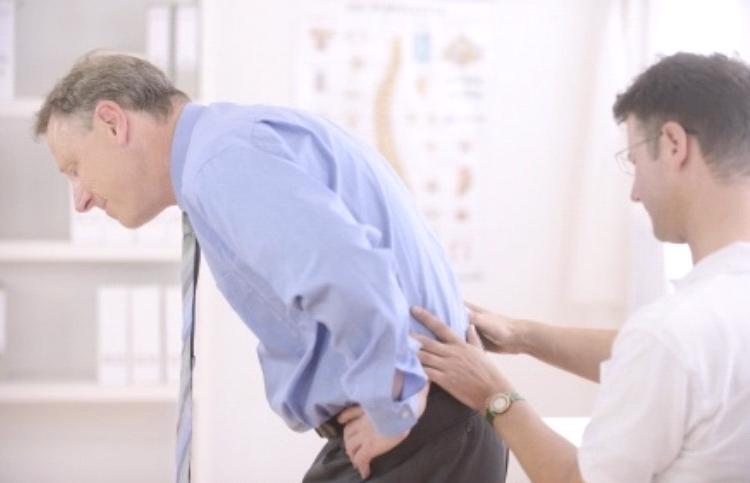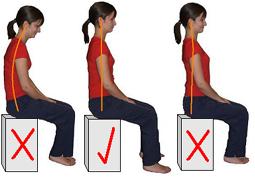 There are several causes of sciatica, which is identified as a painful condition which occurs from soreness or pain that travels from your lumbar or lower spine, to your buttock and all the way down your leg. Sciatica only affects one side of your body, but that one side might as well be both sides for all the pain you will experience. Sciatic pain does not discriminate where it chooses to wreak havoc – it might be a tolerable ache, or an excruciating pain. There are ways to try to thwart sciatica and stop it in its tracks, but many times, other medical issues are the underlying cause of the sciatic problems, thus, the malady is not strictly your own doing. For example, although sciatica is believed to originate from prolonged sitting, even the simple act of coughing or sneezing can cause a sciatica sufferer great discomfort. Sometimes (but rarely), the sciatic nerve can be compressed by a tumor, or damaged by a disease such as diabetes, or, it could become pinched, usually by a herniated disc in your spine, or by an overgrowth of bone (bone spur) on your vertebrae.
There are several causes of sciatica, which is identified as a painful condition which occurs from soreness or pain that travels from your lumbar or lower spine, to your buttock and all the way down your leg. Sciatica only affects one side of your body, but that one side might as well be both sides for all the pain you will experience. Sciatic pain does not discriminate where it chooses to wreak havoc – it might be a tolerable ache, or an excruciating pain. There are ways to try to thwart sciatica and stop it in its tracks, but many times, other medical issues are the underlying cause of the sciatic problems, thus, the malady is not strictly your own doing. For example, although sciatica is believed to originate from prolonged sitting, even the simple act of coughing or sneezing can cause a sciatica sufferer great discomfort. Sometimes (but rarely), the sciatic nerve can be compressed by a tumor, or damaged by a disease such as diabetes, or, it could become pinched, usually by a herniated disc in your spine, or by an overgrowth of bone (bone spur) on your vertebrae.
While the consequences sound dire for a person that suffers from sciatica, the good news is that, for most cases, 90% of sciatica sufferers have a full recovery from a bout of sciatica without the need for surgery.
Some of the triggers for sciatica are listed below. Remember: if pain persists, you should contact a specialist who will evaluate you to determine the appropriate measures to get you feeling more like yourself again a spine specialist in NJ is the answer to your sciatica woes.
The pesky piriformis muscle
 The majority of people who get sciatica are between 30 and 50 years old.
The majority of people who get sciatica are between 30 and 50 years old.
The piriformis is a muscle found deep inside the buttocks and connects the lower spine to the upper thighbone and runs directly over the sciatic nerve. Piriformis syndrome or symptoms of sciatica are triggered if the muscle goes into spasm thus putting pressure on the sciatic nerve.
In men, a fat wallet can trigger piriformis syndrome, since most men carry their wallet in the back pocket of their pants. This perpetual pressure on the piriformis muscle in turn can aggravate the sciatic nerve over time. The solution is to keep the wallet in a front pocket or jacket, or perhaps use a money clip.
In women, piriformis syndrome often develops during pregnancy because of pressure on the sciatic nerve from the developing fetus. Often, as a result of the added weight of the baby, the pelvis begins to tilt forward and it causes the piriformis to tighten around the sciatic nerve.
Specific causes for developing sciatica
For both men and women, the most-common origins for sciatica are triggered by a herniated disc or degenerative arthritis of the spine, but there are other spinal maladies as well, such as:
- Herniated discs which are another one of those facts of life that happen as people get older. Spinal discs function like cushions between the vertebrae of your spine, and as you age, the discs get weaker and are prone to injury. Occasionally, the gel-like center of a disc pushes through its outer lining and presses on the roots of the sciatic nerve. This is a common malady with about one in fifty people getting a herniated disc at some point in their life. If your sciatica is due to a herniated disc, and it’s still causing severe pain after four to six weeks, surgery might be an option for the pain. To relieve the pressure on the sciatic nerve, a surgeon will remove a portion of the herniated disc. The results are good with about 90% of patients receiving relief from this type of surgery. Other surgical procedures can relieve sciatica caused by spinal stenosis.
- Spinal stenosis is the natural wear and tear of the vertebrae and can lead to a narrowing of the spinal canal. The narrowing may put pressure on the roots of the sciatic nerve. Spinal stenosis is more common in adults over age 60, and, like a herniated disc, surgery may be performed to provide relief to the sciatic sufferer.
- Tumors along the spinal cord or sciatic nerve is a malady that is not as common as the spinal maladies detailed above, but wherein sciatica may result from tumors growing inside or along the spinal cord or sciatic nerve. As a tumor grows, it may start to put pressure on the nerves that branch off from the spinal cord.
- Sacroiliitis is an inflammation of one or both of the sacroiliac joints, the spot where the lower spine connects to the pelvis. Sacroiliitis can mimic sciatica because it causes pain in the buttocks, lower back, and may even extend down one or both legs. The pain can worsen with prolonged standing or climbing stairs. Sacroiliitis may be caused by arthritis, injury, pregnancy, or even infection.
- Injury or infection may also be the origin of the sciatic pain, and may include muscle inflammation, infection, or injury, such as a fracture. For the most part, any condition that compresses the sciatic nerve and causes irritation can trigger sciatica symptoms. In some cases, no specific cause of sciatica can be found.

Take it easy
Again, a spine specialist will give you an evaluation and suggest options for the sciatica pain. For most people, sciatica responds to self-care measures. Contrary to what you would think, while resting for a day or so may provide some temporary relief; prolonged inactivity will make your signs and symptoms worse.



